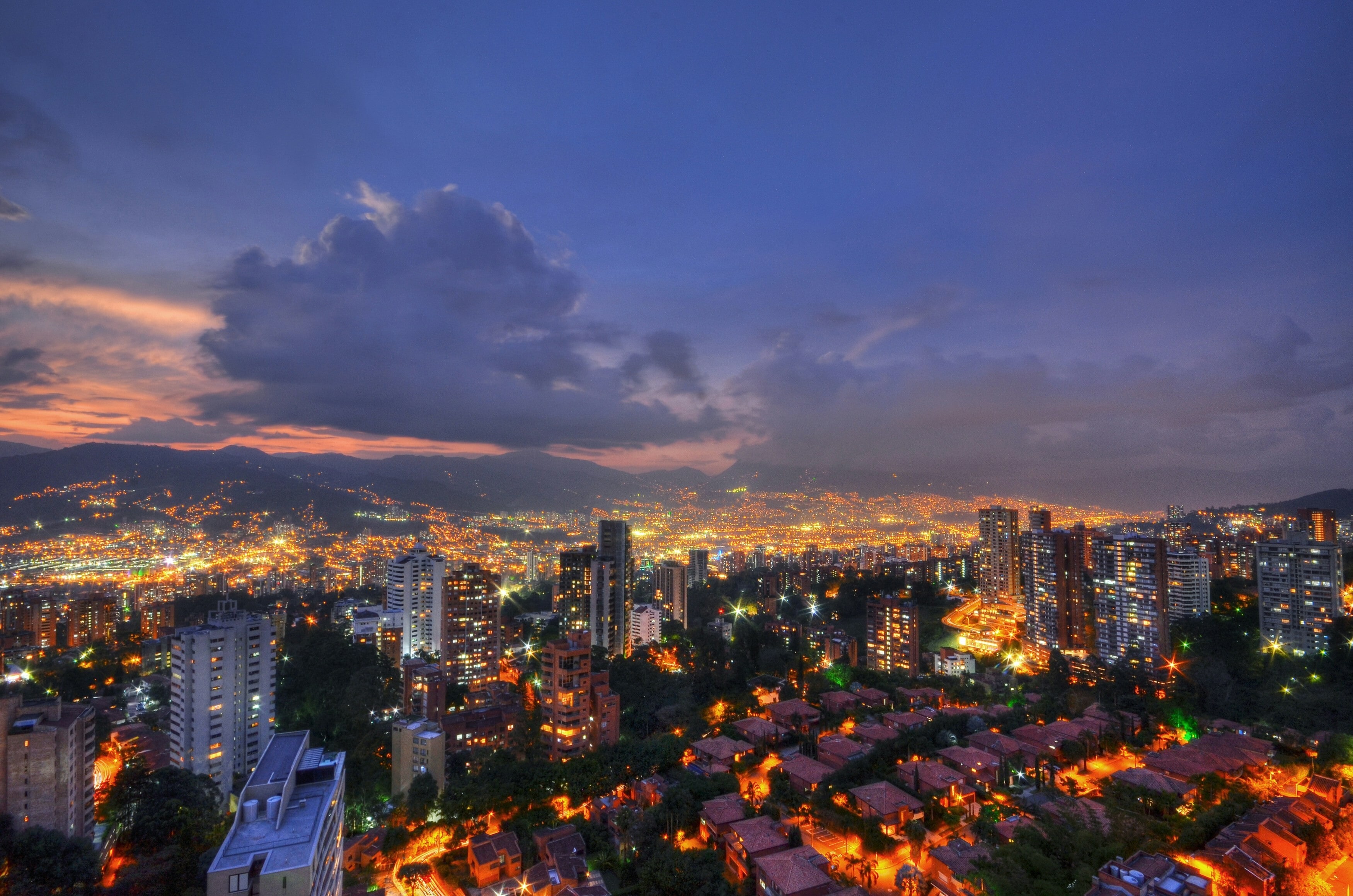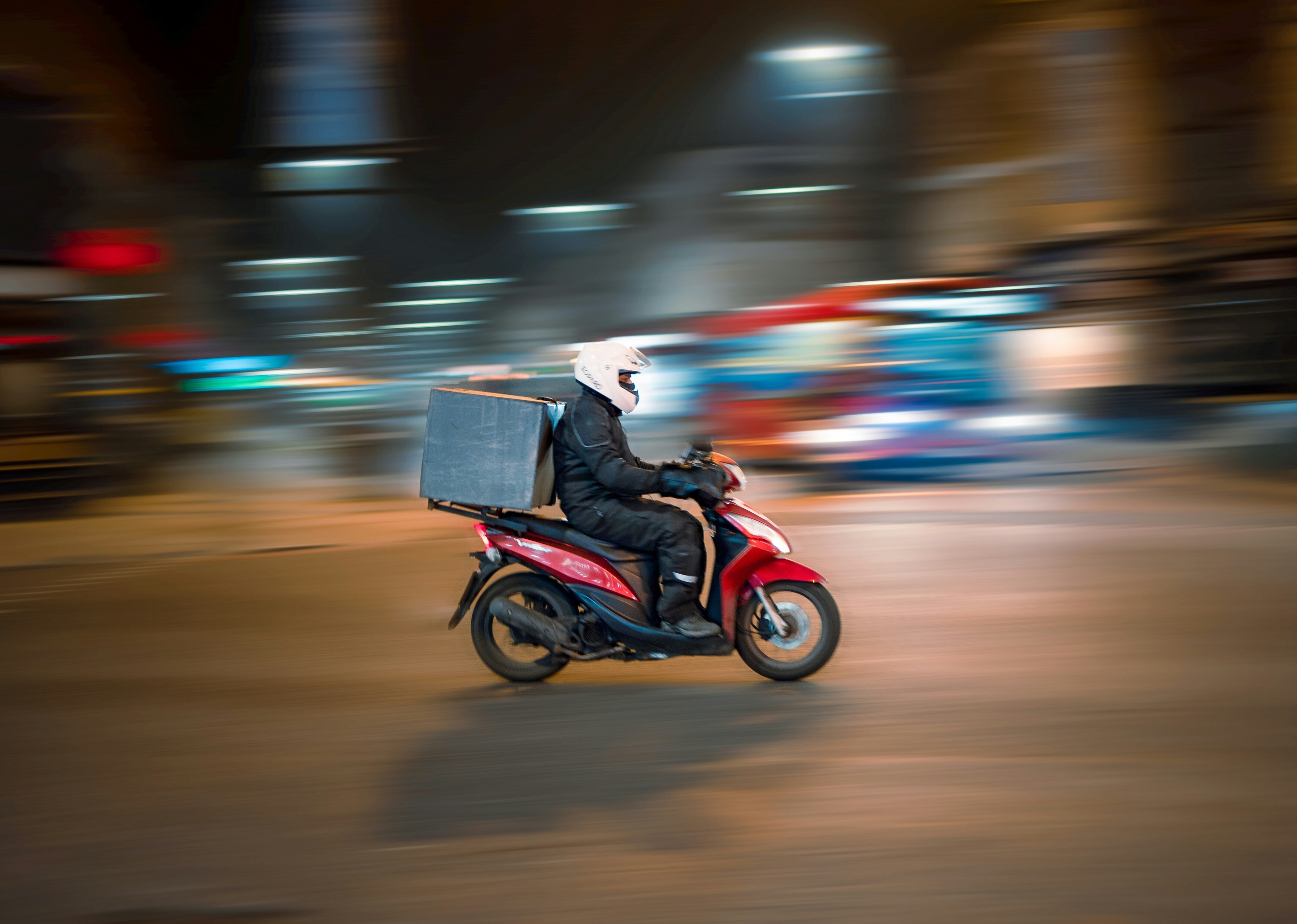How cities are preparing for more extreme weather

Flooding has arguably been the most prominent of extreme weather events this year around the world.
Image: Unsplash/Kelly Sikkema
Stay up to date:
Climate Indicators
- From flooding to heatwaves, the world is feeling the effects of global warming as extreme weather events become increasingly common. So how can we prepare?
- In the US, nearly one in three people has experienced an extreme weather event between June and August alone.
- Whether it's creating 'sponge' roads and pavements to absorb water, or increasing the number of trees to cool the streets, each change could save lives.
2021 has already been another record year in extreme weather events. Floods, hurricanes, wildfires, and other disasters have continued to hit communities around the world with increasing intensity and frequency due to a warming climate. In the US, nearly one in three peoplehas experienced an extreme weather event just between June and August.
Cities are at the forefront of this ongoing crisis. Here’s what needs to happen for them to stay livable in a world of floods, heat, drought, and fire.
Floods
Flooding has dominated a year of extreme weather events, with more than1,800 flood events happening across the world so far this year. Some were due to regular seasonal events, like hurricanes or monsoons. But many of the worst this year in cities in Zhengzhou in central China, central Tennessee in the US, and central Germany, were unexpected non-coastal floods that hit urban areas that weren’t prepared for them.
What’s the World Economic Forum doing about climate change?
Floods are especially devastating for cities because of how they’re designed—concrete and asphalt pavement don’t absorb water, so it has nowhere to go but downhill into drains, which quickly get overwhelmed in an extreme storm. The result is that 1.47 billion peopleglobally are vulnerable to extreme flooding. Most of these are urban dwellers in coastal cities.
What cities are doing about it:
- Designing hard surfaces for better absorption—this is the thinking behind the “sponge city” concept popularized in China, which uses permeable materials for roads and sidewalks, as well as dedicated green spaces to absorb rainwater.
- Finding ways to retain and reuse excess stormwater. Rotterdam, for example, is using excess rainwater for water features in parks.
- Incorporating stormwater into local ecosystems by preserving and restoring natural wetlands, like New Orleans is doing.
Heat
In a warming world, cities are the hottest place to be. During a heat wave, the concrete and brick surfaces of dense urban jungles trap heat and raise surface temperatures even higher. In recent years, heat waves have gottenlonger, more frequent, and more intense.
That’s a challenge for cities, because heat is deadly: It kills more people in the US each year than any other weather event. Worldwide, it causes more than 637,000 excess deaths per year. Even areas historically accustomed to dealing with heat, like Sicily and Mumbai, are feeling the toll of high heat waves.
What cities are doing about it:
- One of the most effective ways to protect people from heat is to create shade. That’s why cities from Paris to Toronto are increasing their tree canopy cover in parks and neighborhoods.
- Building materials that currently make the effects of heat worse can be used for cooling as well. New York City and Los Angeles have programs to paint building roofs and some streets white, which reflects heat and lowers temperatures.
- Cities can prevent unnecessary heat deaths by strengthening planning and social infrastructure. Alert systems, community cooling centers, and especially outreach to the most vulnerable citizens—like Buenos Aires’ plan, which makes special provisions for elderly people—are all important.
Drought
Droughts are harmful for the way they put sustained stress on multiple facets of human societies, including cities. Beyond limiting crop production, droughts hamper electricity grids, and even job prospects. Within the last 20 years, drought has led to global economic losses of at least $124 billion, according to a United Nations estimate.
Humans throughout history have dealt with (and succumbed to) seasonal droughts caused by variations in rain patterns, but climate change is making them worse. The western half of the US has been afflicted with drought for most of the summer; Lake Mead, the largest water reservoir in the US, dropped to the lowest it’s ever been, prompting water-use restrictions for California, Arizona, and Nevada beginning in 2022. In Madagascar, drought is pushing the country into a famine.
What cities are doing about it:
- The most effective response to drought is to curb water use, which various cities have done with incentives and enforcement. Facing a drought in 2018, Cape Town, South Africa, reduced its water consumption by nearly 60%(pdf), in part by limiting individuals to 50 liters (13 gallons) per day and instating tariffs for excess use.
- Water infrastructure can be improved in some places by restoring the forests around the city. That’s what Sao Paulo is doing—if fully restored, the forests can naturally resupply and filter water for the city.
- Not enough freshwater to go around? Try making some from seawater. Israel’s national government has invested in the world’s largest desalinationplant, though so far it hasn’t been quite enough to overcome the country’s chronic drought problem.
Fire
Dry trees and brush caused by heat and drought create the perfect kindling for wildfires. And while seasonal fires are historically a part of the way some ecosystems maintain balance, the enormous, uncontrollable blazes in western North America over the past few years are a direct result of longer, hotter dry seasons spurred by climate change.
In the past, cities have mostly had to deal with wildfire smoke and its effect on air quality (smoke exposure can cause or worsen respiratory disease). But increasingly, the flames themselves are threatening homes and businesses right up into cities.That can disrupt entire economic sectors—losses in the agricultural and tourism sectors from the 2020 Australian bushfires were estimated to beAUD$5 billion(US$3.7 billion).
What cities are doing about it:
- In the Bay Area, where multiple cities are affected by wildfire smoke, regional agencies have air quality management and alert systems to help residents prepare. Community organizations have also organized N95 mask donations for low air-quality days.
- Local leaders in fire-prone communities in the US continue to reevaluate their zoning and land use regulations to define where and how homes may be built in the places where forest and development meet.
- California’s state government just launched a funding program to support people retrofitting houses with more fire-resistant materials.
Prediction
Climate scientists largely agree that as a planet, we’ve blown past the point of avoiding the effects of human-generated climate change. The best we can do now is to mitigate its impacts and limit further warming. City policymakers can forge a future that adapts to the reality of climate change, or resist it to preserve our current way of life.
An adaptive future would likely entail some major intentional changes—and, yes, some sacrifices—to life as we know it now. Adaptation could entail managed retreat (moving homes and buildings away from risky coastal areas and resettling them elsewhere) or regular water rationing. In some places, it could mean building homes differently to allow for passive cooling, and changing the hours of the working day so that people won’t be exposed to dangerous heat.
A resistant future will involve change and sacrifice as well, but it will come as a reaction once the worst has already happened. Resistance looks like continuing to build our cities as they are, putting up defenses against weather events, and suffering the consequences when they inevitably fail. That could mean building taller levees that may weather more storms, but massive flooding if (or, likely, when) they break or overtop. It means continuing to build with concrete, resulting in mass casualties from heat-related illness each year. It means continuing to expand cities into fire-prone wildlands, at the risk of massive evacuations and loss of life and property.
Leaders are starting to undertake some adaptive strategies now, but it might be too little too late.
Accept our marketing cookies to access this content.
These cookies are currently disabled in your browser.
Don't miss any update on this topic
Create a free account and access your personalized content collection with our latest publications and analyses.
License and Republishing
World Economic Forum articles may be republished in accordance with the Creative Commons Attribution-NonCommercial-NoDerivatives 4.0 International Public License, and in accordance with our Terms of Use.
The views expressed in this article are those of the author alone and not the World Economic Forum.
Related topics:
Forum Stories newsletter
Bringing you weekly curated insights and analysis on the global issues that matter.
More on Climate ActionSee all
Tom Crowfoot
August 12, 2025
Luis Antonio Ramirez Garcia
August 11, 2025
Michael Fröbel and Stanislas Hillen
August 8, 2025
Elizabeth Henderson and Daniel Murphy
August 8, 2025





